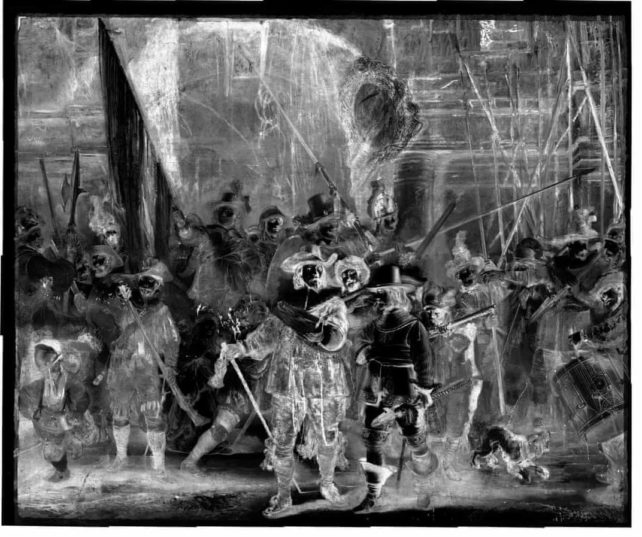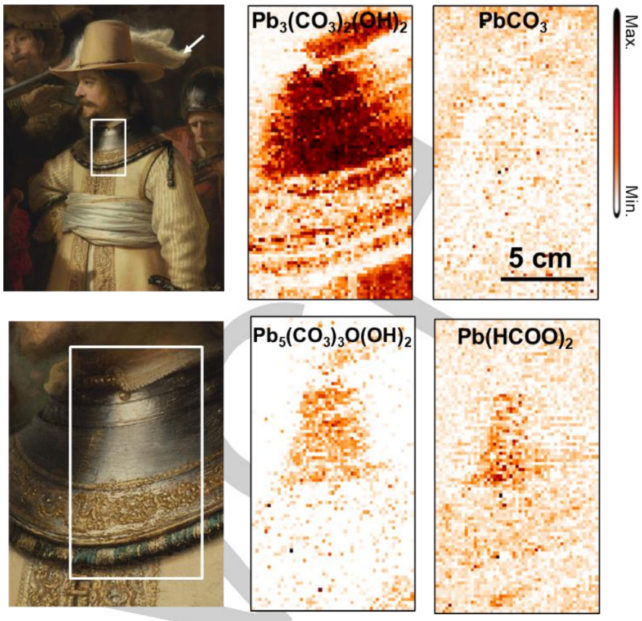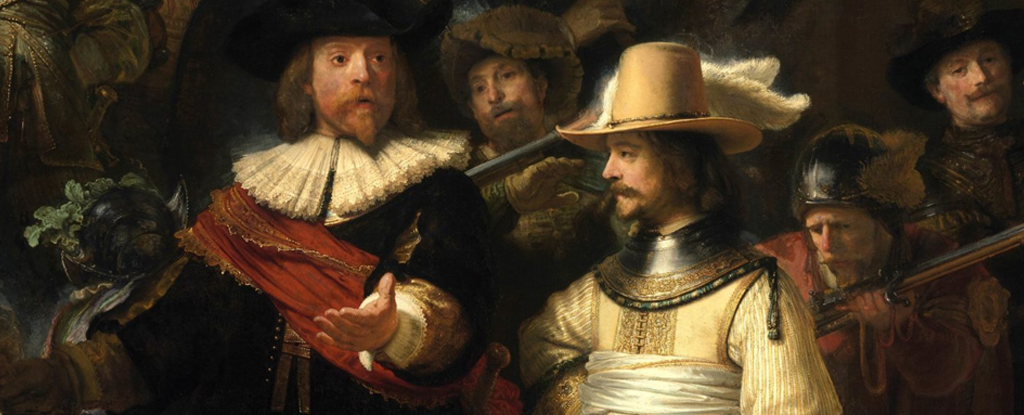Products You May Like
At 3.63 meters (12 feet) tall and 4.37 meters across, the painting known commonly as The Night Watch is Rembrandt’s largest painting. Centuries after its creation, we’re still uncovering the smallest of details in its pigments, thanks to advances in modern technology.
A team of researchers from across Europe have found an unexpected molecule while studying the build-up of paint making up the famous Dutch Golden Age artwork.
Thanks to the layers of pigments and other media like primers and varnishes, paintings can vary in chemical composition in three dimensions. So as well as scans of the masterpiece’s surface, experts working on the conservation project Operation Night Watch took minute samples down through the famous painting’s layers.
In 2021, two years into the project, macro-XRF mapping revealed Rembrandt’s original sketch under the final version of The Night Watch. By beaming x-rays onto the painting, the tehcnology forces pigments to absorb and then emit high energy light in tell-tale ways, identifying the distributions of different elements within individual layers.
This mapping revealed many little details that had been changed from the original sketch to what we can see today.

It wasn’t just the imagery that caught the researcher’s attention, though. A technique called x-ray powder diffraction revealed the presence of lead formates, including the rare lead(II) formate, Pb(HCOO)2.
Commonly used in the creation of white and yellow pigments at the time, it’s far from surprising to find the element lead in a Rembrandt art piece. This particular class of lead compounds, however, has only been detected in studies modelling the aging of old paints – not in old paintings themselves.
“Not only do we discover lead formates, but we identify them in areas where there is no lead pigment, white, yellow,” explains French National Centre for Scientific Research photochemist Victor Gonzalez.
“We think that probably they disappear fast, this is why they were not detected in old master paintings until now.”
The distribution of the lead formates suggests it was more concentrated in some layers than others and associated with light color paints.
Gonzalez and colleagues modeled scenarios with different known paint recipes from the time.

“Thanks to the unique analytical performance of the ESRF, the world’s brightest synchrotron light source, we could map the presence of formates at a micrometric scale, and follow their formation over time,” explains Beamline scientist Marine Cotte from the European Synchrotron Radiation Facility (ESRF).
Their results suggest Rembrandt mixed lead(II) oxide into his paint medium of linseed oil for the lighter paint colors to help them dry. Interactions with other molecules over time turned this into the lead formates. Seems even great painting masters like Rembrandt could get impatient with this slow drying medium.
However, it’s also possible that these formates could have arisen from previous restoration efforts, the team explains.
Past attempts at restoration have caused huge changes in the painting, which is actually not a night scene at all. Many layers of varnish, mixed with dirt darkened the scene to give that impression, eventually giving rise to its common name by the end of the eighteenth century.
The painting’s official name is Militia Company of District II under the Command of Captain Frans Banninck Cocq, and Operation Night Watch is now looking into how to remove these varnish layers without disturbing the original painting underneath.
“In addition to providing information on Rembrandt’s pictorial techniques, this research opens up new avenues on the reactivity of historical pigments, and therefore on the preservation of heritage,” says University of Antwerp analytical chemist Koen Janssens.
In 2021, a missing strip that had been cut away from the artwork was also painstakingly reconstructed with the aid of AI.
“It really gives the painting a different dynamic,” museum director Taco Dibbits told the Associated Press at the time. “And what it taught us is that Rembrandt never does what you expect.”
Rembrandt is famous for his exploration of painting materials, techniques, and compositions and the discoveries by Operation Night Watch researchers have continued to demonstrate this.
This study is published in Angewandte Chemie International Edition.
